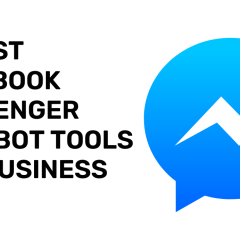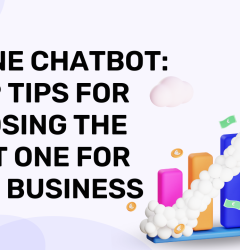09 Jun
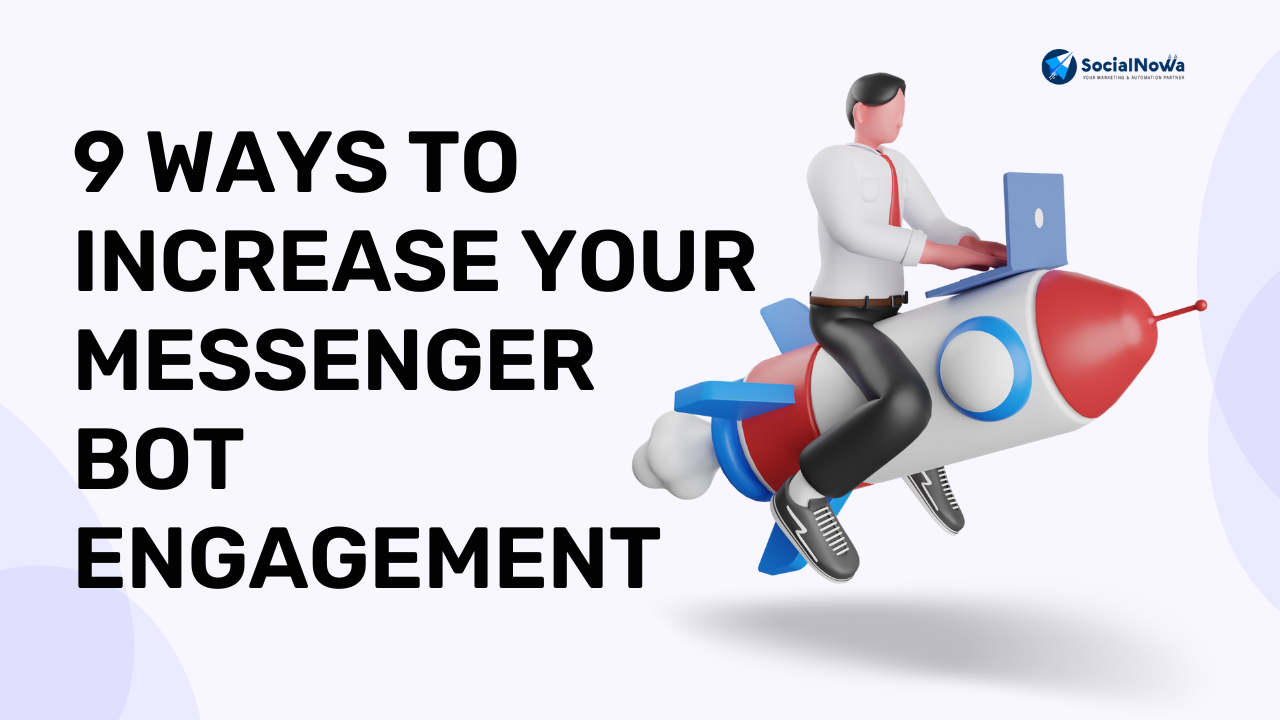
Do you want your Facebook Messenger Bot Engagement to engage more users? Curious about how and where to market your chatbot?
This post will teach you how to encourage Facebook users to interact with your Messenger bot.
Messenger Bot Engagement
1. Provide subscribers with special access to the Messenger Bot
Because Messenger Bot Engagement aren’t the most visible mainstream marketing mediums, getting people to notice them might be difficult.
You may want to set up a Messenger Bot Engagement for your Facebook company page for a variety of reasons. It can be used to handle FAQs and other customer support inquiries for inbound purposes.
Alternatively, as LEGO did with their cleverly branded Ralph, the Gift Bot, you can create an automated eCommerce experience.

Others employ Messenger bots for outbound content delivery, providing regular updates to their subscribers with high open rates.
Offering special content as an incentive to subscribe to your bot is a good approach to attract people to do so.
Frank Carter & the Rattlesnakes, an English punk rock band, gave fans early access to their new album’s limited edition vinyl.
To get people to visit the Messenger bot, the band used a direct m.me link.
The link works on both desktops and mobile devices, opening Messenger.com in a new tab on desktops and the standalone Messenger app on mobile devices.
2. Use “Click-to-Messenger” advertisements.
As more businesses use Messenger to interact with their customers, optimize their customer journeys, and generate more leads, Messenger advertisements are one of the fastest-growing Facebook ad forms.
This ad structure allows you to drive traffic to Messenger directly from the news stream.
You can set up quick-reply or ordinary buttons that go to a custom bot from here, allowing you to create an experience tailored to the ad.

Click the Connect Your Bot option if you want to use a quick-reply button.
Then, to ensure that your custom bot is launched when people click the quick-reply button, paste the payload of your custom bot into the form.
You must choose to Send a Postback from the drop-down option if you want a standard button instead of a rapid reply.
To connect your chatbot, simply paste your own bot payload into the area.
Messenger ads can be a great way to expand your Messenger audience and capture high-quality leads.
A well-designed, simple ad can produce remarkable results.
Mötley Crüe, heavy metal, and hard rock band, launched a simple click-to-Messenger ad that sent people to their bot’s Get Started page.
For the first 30,000 subscribers, the campaign had a cost per subscriber of only $0.05. After that, it remained stable between $0.10 and $0.15 per head until the completion of the campaign.
3. Go to Facebook’s Discover Tab and submit your Messenger Bot | Messenger Bot Engagement
The Discover tab in Facebook’s mobile Messenger app allows users to browse bots created by businesses.
To increase your Messenger bot’s visibility, submit a request to Facebook to have it added to the Discover tab.

Go to the Messenger Platform area of your Facebook page’s settings to submit your bot.
open the submission form, make sure Discover Visibility is set to Show and click the Set Up button.
On the submission form, fill in the following fields:
(a)Add a brief description
of what your bot does in the overview section. When Facebook evaluates your contribution, it will take this information into account.
Choose two categories that are most relevant to the bot (primary and secondary).
Your bot will only appear in one of these categories, with the principal category taking precedence.
(b)Keywords
You can enter up to ten keywords to help the bot appear in search results.
(c)Languages
Choose which languages you want your bot to appear in. Your page’s default language is the default.
(d)Write a short summary
(up to 40 characters) for your bot that will appear below it in the Discover results.
To have your bot assessed by Facebook, click the Submit button after you’re finished.
Getting your bot published on the Discover page can help you earn more subscribers, particularly if it finds traction and ends up in the Popular category.
4. Make a QR Code for Your M.Me Messenger Bot
Facebook offered Messenger codes for both personal and commercial accounts a while ago.
These scannable codes functioned similarly to typical QR codes and were scanned by focusing your camera in the Messenger app on the code.
Beginning in January 2019, Facebook began quietly phasing down Messenger codes for companies, and on August 15, 2019, the Messenger app’s camera feature would no longer support scanning Messenger codes.

Instead, Facebook advises businesses to utilize classic QR codes that lead to an m.me URL. To be honest, QR codes are just as effective as
Messenger codes, save for the in-app support and nifty Facebook-blue appearance.
You can create a QR code with any free QR code generator, link it to your Messenger Bot Engagement , and then share it on social media or print it on flyers, business cards, posters, t-shirts, and other materials.
This is a terrific opportunity to put your offline marketing talents to the test, so come up with inventive ways to get your QR codes, and by extension, your Messenger bot, out there.
5. Turn on the feature that prompts people to send messages | Messenger Bot Engagement
You can enable a Facebook feature that lets visitors know there are several ways to send a message when they visit a page.
Facebook appears to be purposefully ambiguous when it comes to defining such approaches.
When the setting is enabled, they can test different types of prompts on a regular basis.
Go to the Messaging area of your Facebook page settings and look for General Settings to enable the feature.
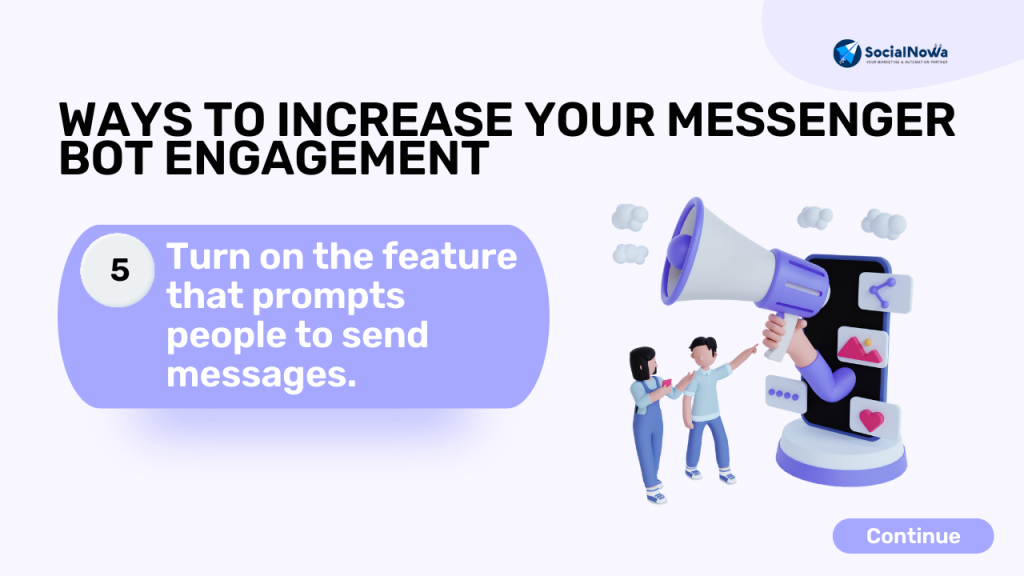
Set the Prompt People to Send Messages slider to On.
A chat box that appears when visitors arrive at your page is one of the established ways in which users are prompted to send messages.
This only happens if your page is marked as Very Responsive to Messages or if you’re online.
It’s easy to be labeled as very responsive if you have a bot connected to your page that automatically answers messages.
On a Facebook page, the pop-up conversation box appears like this.
Of course, a Facebook page’s Send Message button is already an excellent call to action (CTA).
Adding the pop-up chat window to the mix is merely another reminder to visitors to the page that they may communicate with you via Messenger.
Subscriber growth will be aided by increased awareness and visibility.
6. Increase the visibility of Facebook posts that include your M.Me link
Using Facebook to post interesting short-form video content is a significant gain for expanding your reach on the network.
When trying to generate traffic to your Messenger bot, it normally performs far better than text or image posts, so make use of that.
Make sure to include a link to your m.me account in the video description, as well as for instructions on what others should do.
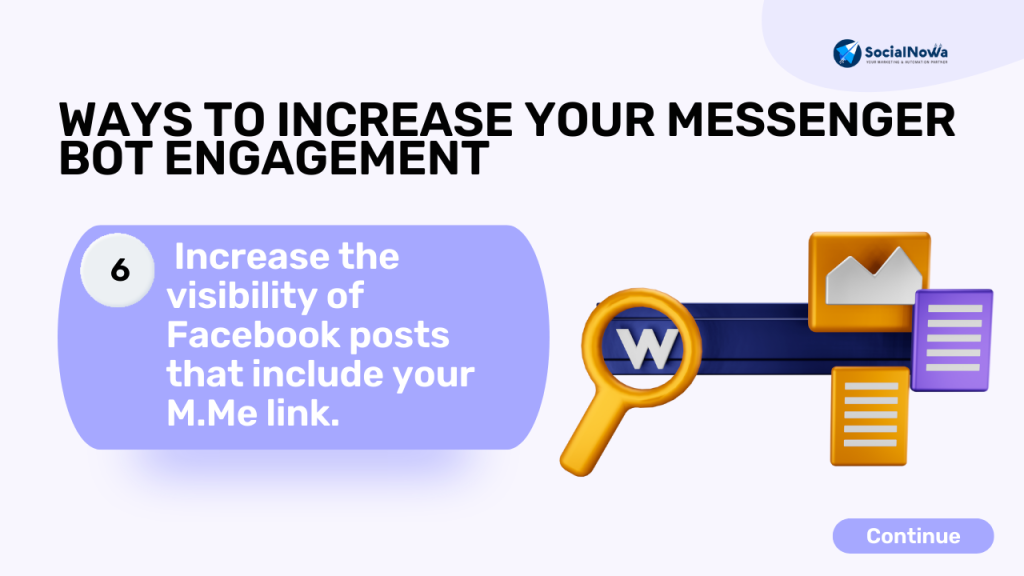
You may also include a button in your post that invites people to connect with you on Messenger in addition to the m.me link.
This button displays as a Send Message button underneath your video and directs traffic to Messenger.
To increase engagement, ask people to interact with your channel and make sure they subscribe to your bot.
On the post itself, here is how the Send Message button looks:
You may create a unique experience for visitors who find up in your Messenger bot by setting up automated replies in your bot that respond to various triggers.
The most straightforward strategy to expand your post’s reach is to invest a tiny bit of money in it.
If you want to quickly gain traction for your articles or aren’t acquainted with utilizing Facebook Advertising Manager to create ads, this is a smart option.
Click the Boost Post button below the post to boost the post that includes your m.me link.
Then decide on an aim, a call to action, your target audience, and the boost’s time and budget.
Select the Messages objective if your post already has a Send Message button so that your boosted post is geared for interacting and conversing with potential clients.
Of course, by using boosted posts, you’re not utilizing the full potential of Facebook’s ad platform.
Consider instead running a click-to-Messenger ad, as explained earlier in this post, if you’re already familiar with Facebook Ads Manager.
7. Connect Your Messenger Bot To Your Site
Adding a Messenger widget to your website is relatively simple thanks to Facebook.
It’s the ideal technique to increase your bot’s audience by leveraging your existing website traffic.
The widget is essentially a Messenger client that is integrated directly on your website.
This implies that discussions in the widget are preserved and mirrored in the Messenger inbox across devices.
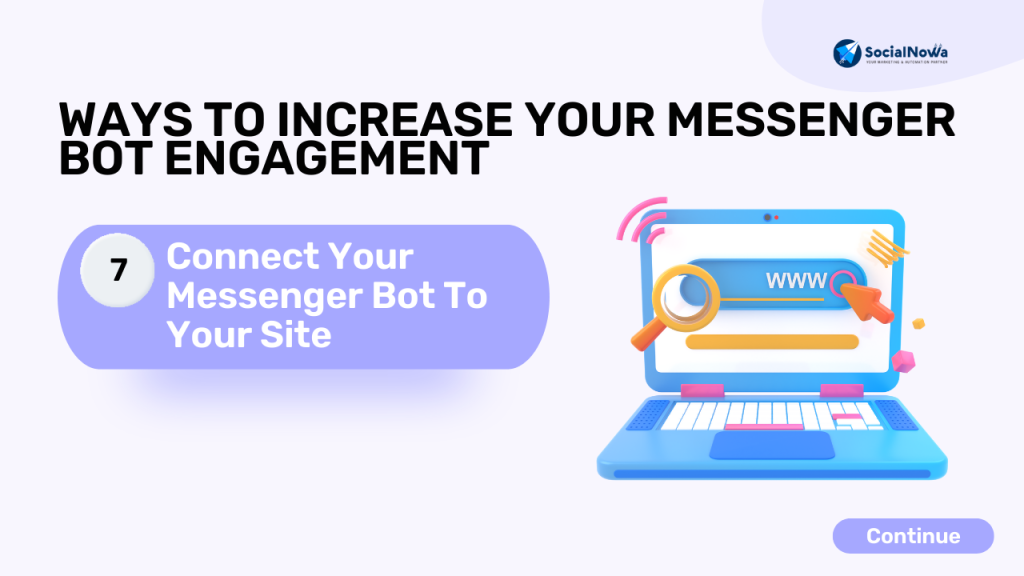
Go to the Messenger Platform area of your Facebook page’s settings, scroll down till you see the Customer Chat Plugin, then click the Set Up button to add it to your website.
Click Next in the pop-up window to begin the three-step process of adding Messenger to your website.
Before consumers decide to interact with your Messenger Bot Engagement, change the welcome they will see.
The Messenger icon and its buttons can then be colored to match the visual branding of your website.
The final step in this process is to add the domain of your website(s) and copy the plugin code.
Simply paste this bit of code into your website, and your widget will be up and running in no time.
When a plugin like this is embedded on a website, it appears like this:
Make sure your greeting is kind, and the CTA button is a bold color that complements your website’s design.
Include a link to your M.Me profile on your FAQ, Contact, and Information pages.
It might be a good idea to connect to your bot from particular pages on your website, depending on what purpose it serves.
Consider pushing traffic to your Messenger bot from your FAQ, contact, or information pages if you’re using it for customer support and it’s well-designed.
Sankey’s, a nightclub company, employed a Messenger bot to sell tickets for their 25th-anniversary tour.
They linked to their chatbot on their FAQ and contact pages, ensuring that the automated ticket sales process was being exploited to its greatest capacity.
8. Include a link to your M.Me profile in your Instagram bio and stories
Because reach and engagement on social media news feeds are becoming more competitive, and the privacy of ephemeral Instagram Stories is replacing traditional social sharing as the preferred mode of social sharing, hiding your m.me link behind a swipe-up is a great way to expand your Messenger audience.
However, the swipe-up option for Instagram Stories is not available to all accounts.
This functionality is only available to verified Instagram business accounts with 10,000 or more followers.
You can get around this restriction by running an Instagram Stories ad. If you don’t want to spend the money on ads, you could simply mention your m.me link in the narrative itself.

Instagram stories are visible to your followers for 24 hours after they are posted.
By adding the swipe-up story to your story highlights, you can avoid the 24-hour limit and keep the information on your Instagram profile forever.
Although you’re certainly aware that linking to external websites on Instagram might be difficult, it doesn’t mean you shouldn’t try to generate traffic to your Messenger channel from your Instagram profile.
On Instagram, you can share links in a variety of ways. Adding a link to your bio is the simplest method.
You can only add a linked link here on Instagram. When modifying your Instagram profile, type your m.me link in the Website section.
If you have a huge, active Instagram following, use your m.me link to inform your followers that they can contact you on Messenger Bot Engagement .
You might be afraid to market your Facebook Messenger bot because you only get one clickable link.
Consider employing a link provider that allows you to display many links in that situation.
Linktree offers a free basic subscription that allows you to share unlimited links, including your m.me link, with your Instagram followers.
The basic plan allows you to customize one of the numerous themes. You may track visitors in additional ways and customize your Linktree page more thoroughly if you upgrade to the paid plan ($6 per month).
The majority of companies link to their website from their Instagram bio. You won’t have to give up that space to push your m.me link if you use a linking provider.
9. In your emails, include a link to your Facebook Messenger bot
Many marketers include links to their social media accounts in their email signatures; why not include a link to your Facebook Messenger bot as well?
All you have to do now is add a Facebook Messenger symbol to your m.me URL and you’re done!
An email signature generator can be used by individuals who desire something a little more complicated.
Although you can’t add a custom Messenger icon to the tool’s native social sharing options, you may still include a link to your bot by hiding it behind the Facebook icon or establishing a custom field.
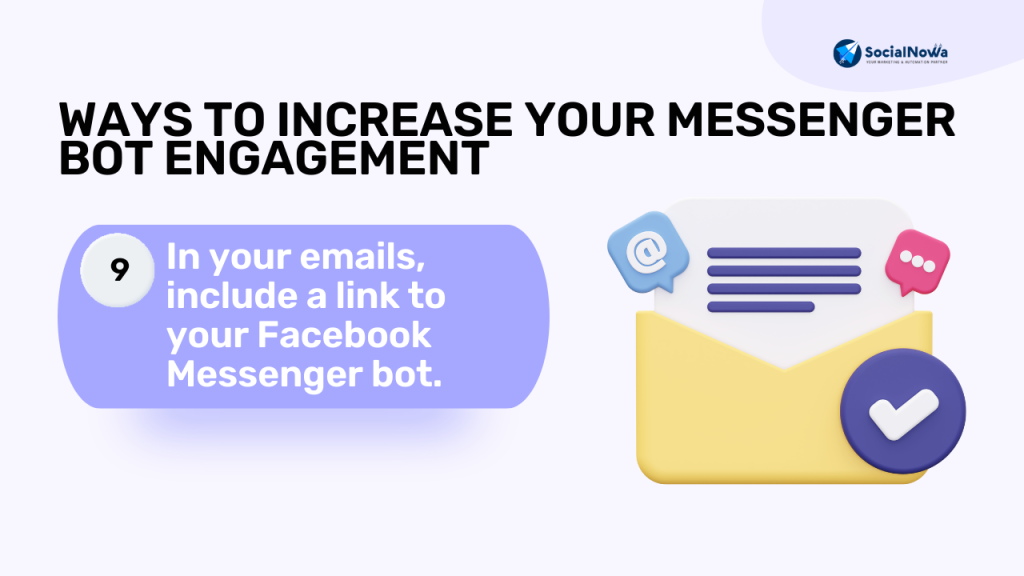
It also allows you to include a CTA in your email signature, which is a terrific feature.
The CTA can have a link, a button, and 24 characters of copy. The text color can also be changed.
Create an eye-catching CTA that directs traffic to your Messenger bot, so that each email you send has the potential to bring in a new Messenger bot subscriber.
Because of Messenger’s strong open rates, many marketers use it as a substitute for traditional email newsletter marketing. But why make a sacrifice if you have the time and resources?
Take advantage of the opportunity to promote both marketing channels at the same time.
If you already have a large email list and issue a newsletter on a regular basis, use it to announce the existence of your Messenger bot or include a button in your bot that allows people to subscribe to your email newsletter.
Consider also sending your audience a Messenger version of your newsletter. Simply ensure that the newsletter’s content is repurposed in a chat-friendly manner.
Conclusion

The content and experience of your Messenger chatbot must be excellent. This is most likely the most important strategy for your bot’s and audience’s long-term growth. The danger of using an automatic response bot is that communication will break down.
Unless you’re an expert in natural language processing and AI, there’s a good chance your bot won’t keep the suspension of disbelief that makes communicating with it so enjoyable.
Similarly, if you’re using Messenger for outbound broadcasting, keep your audience in mind and segment it properly so that you’re only sending material to individuals who will appreciate it.
Both conversational and experiential marketing are available to you.
There are various ways to expand your channel, whether you want to drive traffic to your bot or are just getting started and want to be ready for its debut and promotion.
To make your chatbot a success, you and your team will need to be dedicated and creative,
whether it’s offering unique content and discounts as an incentive, running click-to-Messenger advertisements, or printing QR codes on business cards.
What are your thoughts on the subject? Which of the following methods do you employ to advertise your Messenger bot? Do you have any further strategies to add to this list? Comment below with your ideas!
